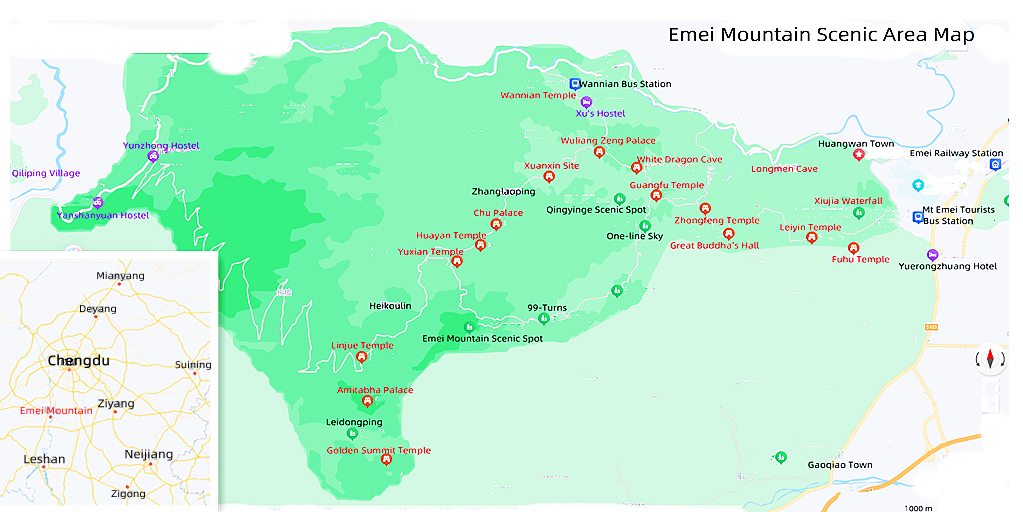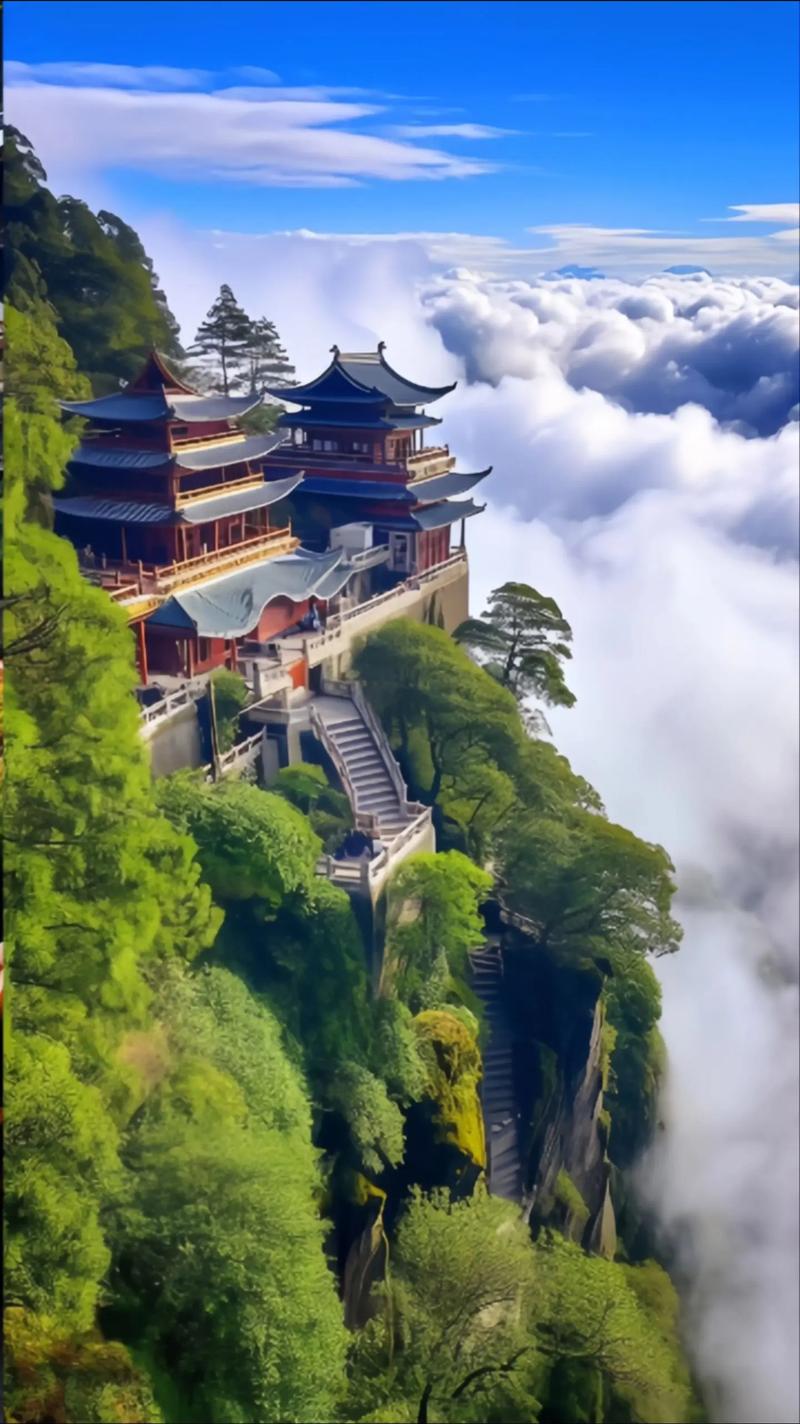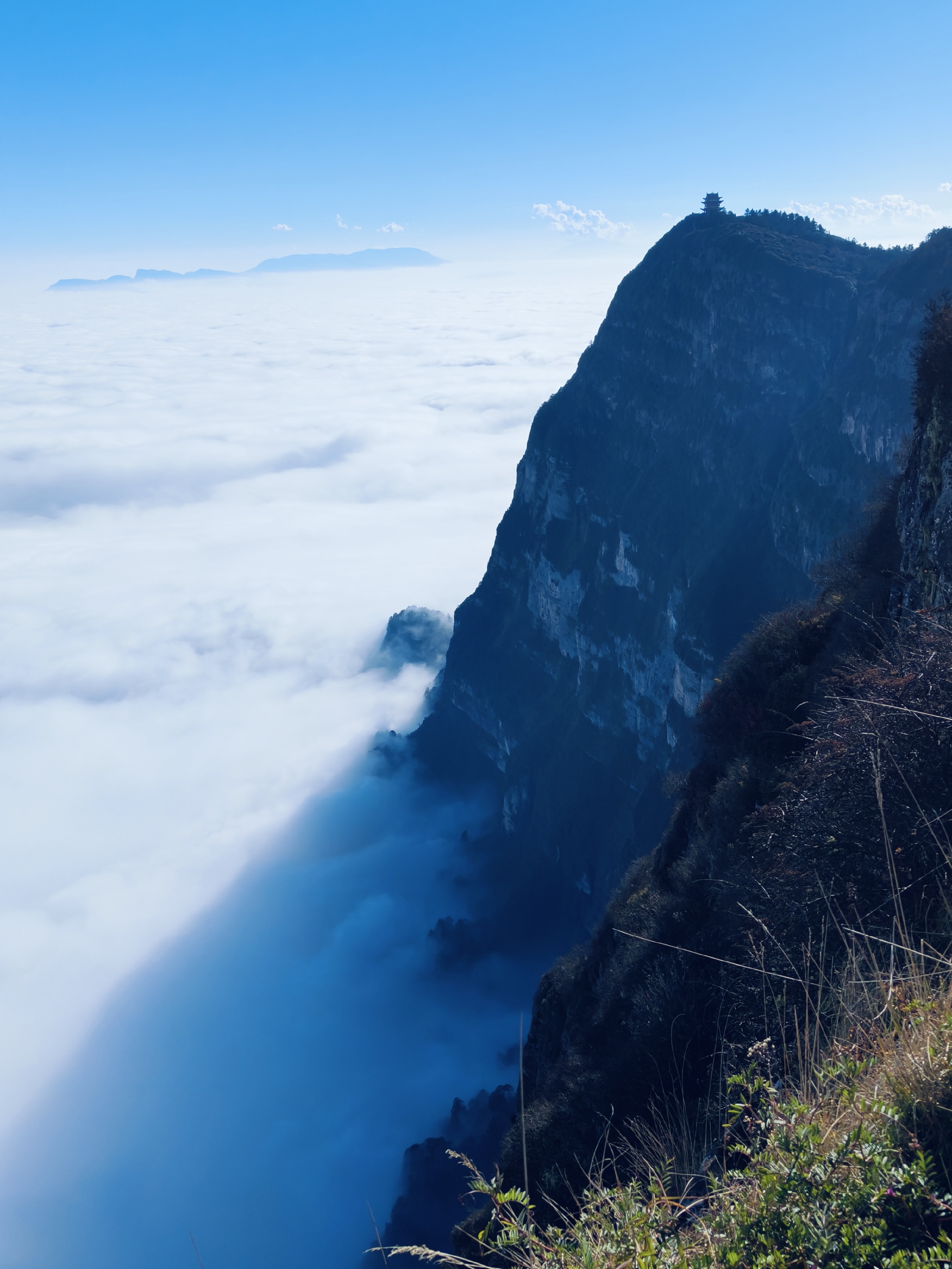Emei Mountain, a branch of the Qionglai Mountains, is located on the southwestern edge of the Sichuan Basin, Meishan City of Sichuan Provicne in China. It is 168km southwest away from downtown Chengdu.

Rising from the Emei Plain and extending north-south, Emei Mountain stretches for 105 km. It has three major peaks such as Da'e Mountain, Er'e Mountain, San'e Mountain, and Si'e Mountain. Among them, Da'e Mountain is regarded as Emei Mountain Scenic Area with an area of 154 square kilometers. The main peak is named Jinding (金顶), also known as the Golden Summit, with 3009 meters above sea-level. But the highest peak of Emei Mountain is the Wanfo Peak with an altitude of 3099 meters.
The geological foundation of the main body of Mount Emei is a north-south short anticline, and the landforms can be divided into erosion landforms (Mount Emei area) and accumulation landforms (Emei fan-shaped alluvial plain) according to the shaping of landforms; According to their causes, they can be divided into tectonic landforms, flowing landforms, karst landforms, and glacial landforms.
What to see in Emei Mountain Scenic Area?
Mount Emei has a profound cultural heritage. Buddhism, Taoism, martial arts, and camellia culture are flourishing on Mount Emei, and many historical figures have left poems here. In 1996, the vast majority of cultural relics in Mount Emei were listed on the UNESCO World Heritage List.
Emei Mountain Scenic Area has been rated as a national key cultural relic protection unit, a national key scenic spot, and a national AAAAA level tourist attraction. Mount Emei is one of the four famous Buddhist mountains in China, the most beautiful mountain in China, and has been rated as a "Global Excellent Ecotourism Scenic Area" by the United Nations.



